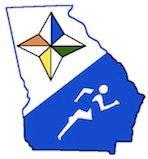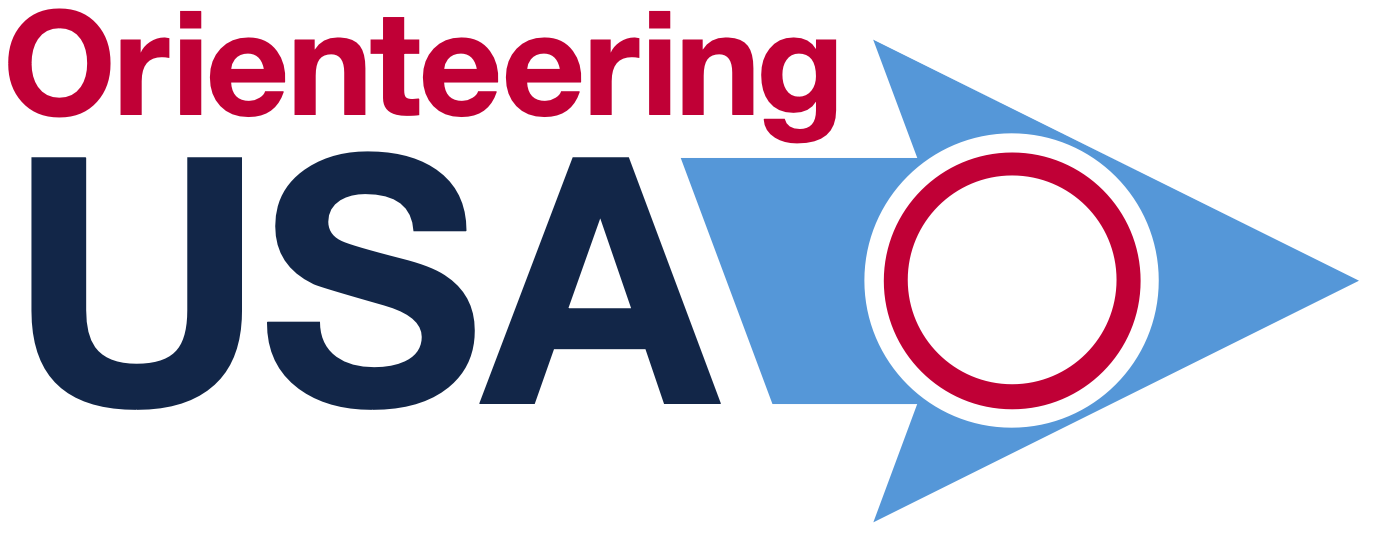|
Home
COVID rules
Race Info
Friday
Sat / Sun
OUSA Junior Championships
Schedule
Registration/Fees
T-shirt
Lodging/Travel
Accommodations
Tourism
Volunteers
Contacts
Meet Guide
Mixed Punching
Georgia Orienteering Club
NATIONAL RANKING EVENT
|
The Competition
The OUSA Junior National Championships will have twelve (12) Individual competitions, three (3) Intercollegiate Team competitions, six (6) Interscholastic Team competitions, and four (4) JROTC Team competitions.
Championship Awards shall be given to the top three finishers in each Championship class who are eligible for Championship awards, regardless of their overall place.
Traveling Cups are awarded to the top eligible teams in IS School Varsity, IS School Junior Varsity, IS School Intermediate, JROTC Varsity, JROTC Junior Varsity, AFJROTC Varsity, and AFJROTC Junior Varsity classes.
Note: School and JROTC teams are not mutually exclusive. JROTC teams that meet school team requirements are also eligible for the school team award.
Rules for competition, eligibility and scoring are specified in the OUSA document "Rules for Orienteering USA Sanctioned Events (March 16, 2018)" available here. In the event of protests, questions or other issues, the OUSA Rules for Orienteering will serve as the source document.
Eligibility
Individuals
To compete for OUSA Jr National Championship individual awards, competitors must compete in one of the OUSA Individual Championship Classes and meet all the following OUSA eligibility requirements:
- Meet standard Orienteering USA National Champion eligibility requirements (OUSA Rules for Competition A.12.2.1), namely:
- Is a regular member in good standing of Orienteering USA
- Is either a citizen or lawful permanent resident of the United States of America
- Meet standard Intercollegiate or Interscholastic class requirements in section (OUSA Rules for Competition A.35.3.1 or A.36.3.1).
- Be a full-time college or university student. (Undergraduate or graduate as defined by the college or university)
- Be less than 30 years old as of 12-31-2023. The OUSA Board of Directors approved a 1 year waiver of rule A.35.3.1.ii to change the age limit from 28 to 30.
- Have competed as an eligible Intercollegiate competitor in fewer than four Orienteering USA Junior Nationals (rule A.37.3.c).
- Be enrolled in a public or private school or be homeschooled.
- Meet the grade requirements listed in the Individual Classes chart.
Intercollegiate (A.35.3.1)
Interscholastic (A.36.3.1)
Individual competition will be held for each of the 4 Intercollegiate and 8 Interscholastic classes:
| Intercollegiate Individual Classes | |||
| Class | Description | Course | |
| ICVM | Varsity Male | Red | |
| ICVF | Varsity Female | Green | |
| ICJVM | Junior Varsity Male | Orange | |
| ICJVF | Junior Varsity Female | Orange | |
| Interscholastic Individual Classes | |||
| Class | Description | Course | School Grade-level |
| ISVM | Varsity Male | Green | Are in any grade through twelve |
| ISVF | Varsity Female | Brown | Are in any grade through twelve |
| ISJVM | Junior Varsity Male | Orange | Are in any grade through twelve |
| ISJVF | Junior Varsity Female | Orange | Are in any grade through twelve |
| ISIM | Intermediate Male | Yellow | Are in any grade through nine |
| ISIF | Intermediate Female | Yellow | Are in any grade through nine |
| ISPM | Primary Male | White | Are in any grade through six |
| ISPF | Primary Female | White | Are in any grade through six |
Note: students ineligible for the Jr National Championship classes may register and compete in any standard class.
Team Competition
To compete as an OUSA Junior National Championship Team, including JROTC teams, all team members must:
- Be an Orienteering USA regular member in good standing.
- Be either a citizen or lawful permanent resident of the United States of America OR be legally enrolled as a full-time student at a U.S. school, college, or university.
- Meet standard Intercollegiate or Interscholastic class requirements in section OUSA Rules for Competition A.35.3.1 or A.36.3.1.
- Have competed as an eligible Intercollegiate competitor in fewer than four Orienteering USA Junior Nationals.
Team competition will be held for each of the three (3) Intercollegiate, six (6) Interscholastic, two (2) JROTC, and two (2) AFJROTC classes.
| Junior National Championship Team Classes | ||
| Description | Course | |
| Team IC School Varsity | males on Red, females on Green | |
| Team IC School Junior Varsity | males on Orange, females on Orange | |
| Team IC Club Varsity | males on Red, females on Green | |
| Team IS School Varsity | males on Green, females on Brown | |
| Team IS School Junior Varsity | males on Orange, females on Orange | |
| Team IS School Intermediate | males on Yellow, females on Yellow | |
| Team IS Club Varsity | males on Green, females on Brown | |
| Team IS Club Junior Varsity | males on Orange, females on Orange | |
| Team IS Club Intermediate | males on Yellow, females on Yellow | |
| Team JROTC Varsity | males on Green, females on Brown | |
| Team JROTC Junior Varsity | males on Orange, females on Orange | |
| Team AFJROTC Varsity | males on Green, females on Brown | |
| Team AFJROTC Junior Varsity | males on Orange, females on Orange | |
Intercollegiate Teams
- An Intercollegiate Varsity Team shall consist of up to 5 competitors made up of any combination of men and women who are eligible for Intercollegiate Varsity competition.
- An Intercollegiate Junior Varsity Team shall consist of up to 5 competitors made up of any combination of men and women who are eligible for Intercollegiate Junior Varsity competition.
- To be eligible as a SCHOOL Team all team members must be enrolled full-time at the same school, as demonstrated by a school ID for the same school, OR have an authorized exception, as demonstrated by an Orienteering USA School Team Exception Form. here
- Intercollegiate team members must all attend the same campus.
Interscholastic Teams
- Interscholastic Varsity Teams consist of 3 to 5 students who are competing in the ISVM and/or ISVF classes.
- Interscholastic Junior Varsity teams consist of 3 to 5 students who are competing in the ISJVM and/or ISJVF class.
- Interscholastic Intermediate teams consist of 3 to 5 students who are competing in the ISIM and/or ISIF classes.
- To be eligible as a SCHOOL Team all team members must be enrolled full-time at the same school, as demonstrated by a school ID for the same school, OR have an authorized exception, as demonstrated by an Orienteering USA School Team Exception Form. here
OUSA Club Teams
- All team members must be primary Orienteering USA regular members of the same Orienteering USA sanctioned Orienteering Club.
- The team must not be eligible as a SCHOOL or JROTC team.
- The Coach of the Club Team shall provide a letter stating that all members meet the eligibility requirements.
JROTC Teams
- All team members must be enrolled in the same JROTC unit in accordance with the host military service requirements.
- JROTC teams may also compete as School teams if they meet the School team requirements above.
Scoring
Races
Awards will be based on the classic-distance races on Saturday and Sunday
Scoring
Scoring for each race will be done in accordance with OUSA Intercollegiate and Interscholastic competition rules as follows:
- For each Individual Intercollegiate and Interscholastic class, an AWT (the average winning time) is defined as the average of the times of the top three competitors in that class who are competing in a team category.
- For each class, for each competitor with a valid result, their score is computed as 60*(competitor’s time)/ (AWT for the class).
- For competitors with an OT, MP, DNF or DSQ result, their score will be the larger of 10+60*(course time limit)/ (AWT for the male class) and 10+60*(course time limit)/ (AWT for the female class) for that team category/level (i.e. Varsity, JV, Intermediate, or Primary).
Individual Score
- Each individual starter shall receive a calculated elapsed time or an incomplete designation (DNF, MP, OT).
- The individual's time will be converted into a score as described above in the Scoring section.
- The winning individuals are determined by lowest total combined score over the two-day competition.
Team Score
Scoring for team awards in Intercollegiate and Interscholastic Team Categories (School, Club and JROTC) will be done in accordance with OUSA Intercollegiate and Interscholastic competition rules as follows:
- Each individual team member shall receive a calculated elapsed time or an incomplete designation (DNF, MP, OT).
- Each individual team member's time will be converted into a score as described above in the Scoring section.
- The best three scores each day for each team are combined for a team score.
- Lowest overall team score wins.
Calculation and Display of Scores
Scores will be calculated and displayed to two decimal places.
Awards
- Medals for 1st, 2nd and 3rd place finishers in each Intercollegiate and Interscholastic Individual class (12 classes).
- Medals for 1st, 2nd and 3rd place finishers in each JROTC Individual class (4 classes).
- Medals to all team members for 1st, 2nd and 3rd place teams in each Intercollegiate and Interscholastic Team class (9 classes).
- Medals to all team members for 1st, 2nd and 3rd place teams in each JROTC Team class (4 classes).
- Traveling Trophies to First Place Teams in seven team competitions: IS School Varsity, IS School Junior Varsity, IS School Intermediate, JROTC Varsity, JROTC Junior Varsity, AFJROTC Varsity and AFJROTC Junior Varsity.


